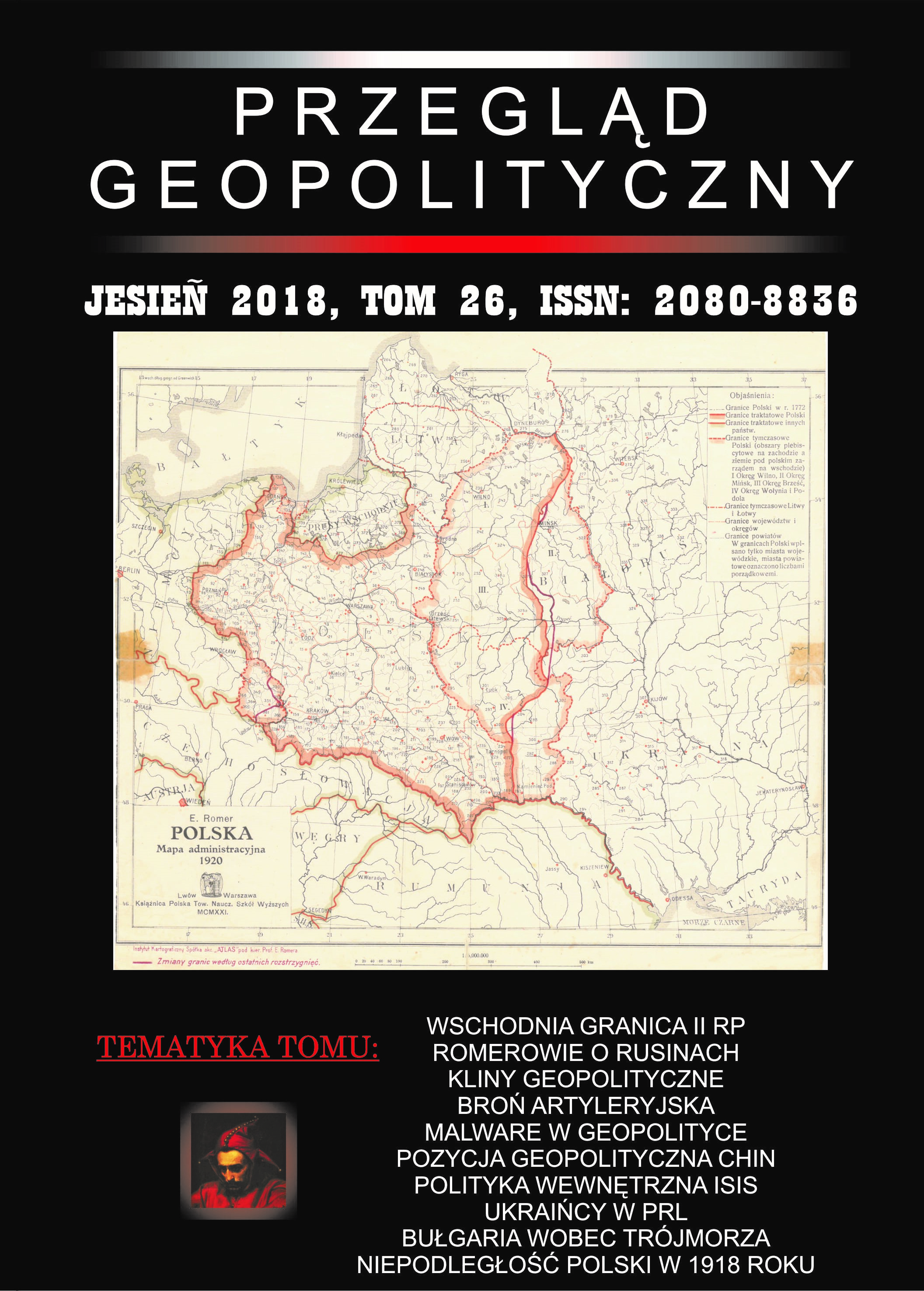UWARUNKOWANIA POLITYCZNE FORMOWANIA SIĘ WSCHODNIEJ GRANICY II RZECZYPOSPOLITEJ
POLITICAL CONDITIONS OF THE SECOND COMMONWEALTH EASTERN BORDER'S FORMATION
Author(s): Piotr EberhardtSubject(s): History, Geography, Regional studies, Recent History (1900 till today), Security and defense, Pre-WW I & WW I (1900 -1919), Interwar Period (1920 - 1939)
Published by: Polskie Towarzystwo Geopolityczne
Keywords: Polish-Bolshevik war;eastern border of Poland;Treaty of Riga
Summary/Abstract: The article presents the political and military conditions and their impact on the formation of the eastern border of the reborn Poland after World War I. This border was dependent on the final result of the Polish-Bolshevik war, which lasted with varying intensity in the years 1918 - 1920. In the first phase of this armed conflict, the advantage was on the Polish side. It was then planned that the future border would run relatively far to the east. It was supposed to have a longitudinal layout and spread approximately between the Berezina River in the north and the Dniester River in the south. In the situation of approaching the Red Army to the Vistula in August 1920, there was a likelihood of liquidation of the Polish state. It was only the defeat of the Red Army in the Battle of Warsaw that enabled the commencement of equivalent negotiations on border issues. In the final part of the article, the course and results of the Peace Conference in Riga were reported. A border was established between Poland and Bolshevik Russia. It lasted from October 12, 1920 to September 17, 1939, when it was annihilated as a result of Soviet aggression against Poland.
Journal: Przegląd Geopolityczny
- Issue Year: 2018
- Issue No: 26
- Page Range: 9-31
- Page Count: 23
- Language: Polish

